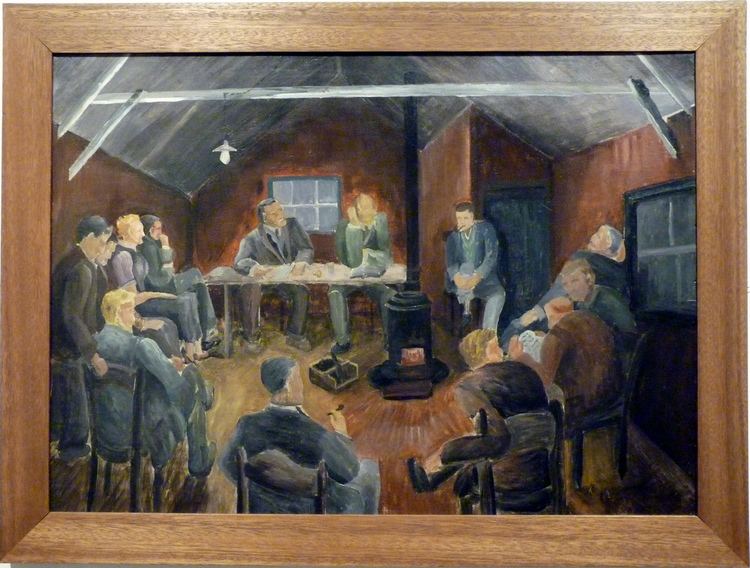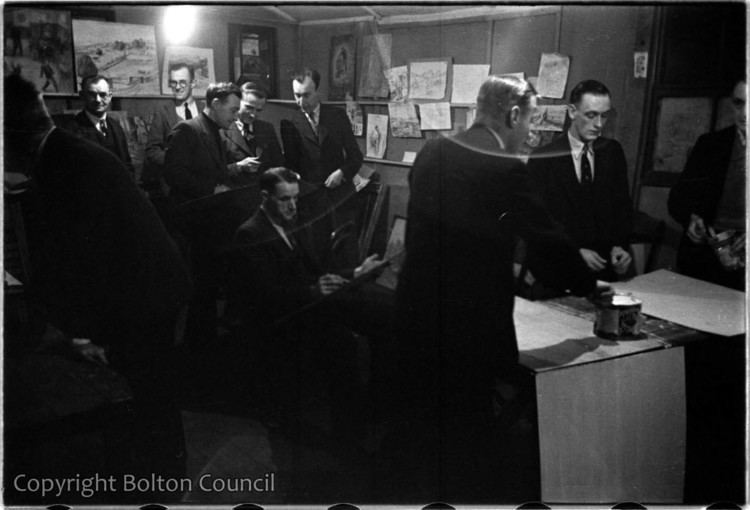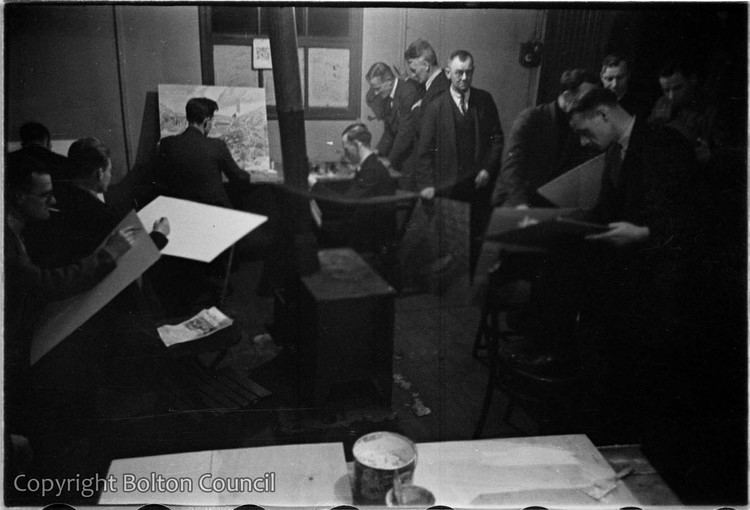The Ashington Group was a small society of artists from Ashington, Northumberland, which met regularly between 1934 and 1984. Despite being composed largely of miners with no formal artistic training, the Group and its work became celebrated in the British art world of the 1930s and 1940s.
Contents
- Origins
- Critical success
- Post war
- Prominent members of the Group
- Other artists relating to the Group
- References

Origins

The Group began as the Ashington branch of the Workers' Educational Association (WEA), which first advertised a class on 'Evolution' in 1927; after a further seven years of evening classes in various subjects they turned their attention to art appreciation. The WEA and Durham University organised for a tutor, the painter and teacher Robert Lyon (1894-1978) to come and instruct the group, but its members, mainly miners from the Woodhorn and Ellington Collieries, quickly grew dissatisfied with the course. Lyon suggested that the group members instead try creating their own paintings as a means to develop an understanding and appreciation of art.
Critical success

By 1936 the group - many of whose members were committed to the principles of the Independent Labour Party - had drawn up an extensive list of regulations, by which all members had to abide, and named itself the Ashington Group; it also held its first exhibition at Armstrong College, Newcastle-upon-Tyne. A further exhibition was held in 1938 as an extension of the Mass Observation project.

By the early 1940s the Group had exhibited in London, and continued to thrive after Lyon left to teach in Edinburgh, though he remained in contact with the Group's members. Over the next few years the work of the Group was noticed and praised by a number of prominent British artists and critics, such as Julian Trevelyan and Henry Moore.
Post-war
After World War II, critical interest in the Group waned, but they continued to meet weekly, producing new art and taking on new members. The critic William Feaver met one of the Group's central members, Oliver Kilbourn, in the early 1970s, and began a renewal of interest in their work, which was restored and featured in several touring exhibitions. In the 1980s, the Group's "Permanent Collection" became the first western exhibition in China after the Cultural Revolution.
The Group's meeting hut was finally demolished in 1983; Kilbourn, the last of the Group's founder members, arranged for the paintings to be put in trust prior to his death in 1993, and they are now kept in Woodhorn Colliery Museum. Feaver's book about the Group, Pitmen Painters: The Ashington Group 1934-1984, has been adapted into a play by Lee Hall.
The paintings can be seen at Woodhorn near Ashington, Northumberland.
